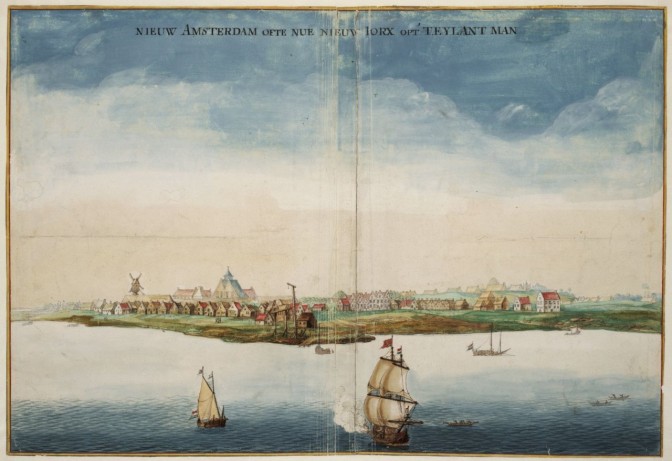If you are doing in New Netherland, the Dutch colony in what later became New York and the surrounding area, you may come across place names that exist in both the (old) Netherlands and New Netherland. When you come across a place in records and you cannot find the person in the records of that town, consider that perhaps the other place is meant. For example, a New Amsterdam marriage record may refer to a bride from “Vlissingen” without specifying whether that is the town on Long Island or the city in the Netherlands.
Examples of places that existed in both the New Netherland colony and the fatherland:
- Amersfoort, now called Flatlands
- Amsterdam, also called Nieuw Amsterdam or New Amsterdam, now called New York City
- Beverwijk, now called Albany
- Breukelen, now called Brooklyn
- ‘s-Gravezande, now called Gravesend
- Haarlem, now called Harlem
- Heemstede, now called Hempstead
- Utrecht or Nieuw Utrecht, now called New Utrecht
- Vlissingen, now called Flushing

Johannes Vingboons, View of Nieuw Amsterdam (New York), c. 1655. Source: map collection Leupe, National Archives, the Netherlands.


My 10th great grandparents married 1649 at Gravesend. There is a Gravesend in England, and Gravesend on Long Island was an English colony within the Dutch colony. So, I have to wonder which came first: ‘s-Gravezande taking the English name Gravesend or Gravesend taking the Dutch name ‘s-Gravezande.
Though the Y-DNA shows the family was probably from Devon in England, they married more and more with Dutch families so that by the time they went to Canada after the Revolution, three of the four grandparents were Dutch although the surname line remained English.
Yvette, thank you so much for this helpful post. Name changes are always a challenge, especially when place names change from Dutch to English.